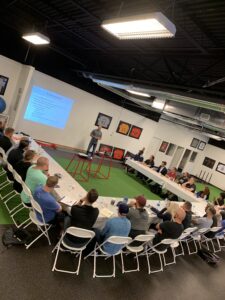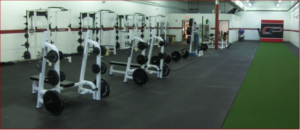
Random Thoughts on Long-Term Fitness Industry Success – Installment 12
It’s time for a new edition of my thoughts on the business of fitness. With Cressey Sports Performance turning 12 last week, it seemed timely. Before I get to it, just a friendly reminder that Pete Dupuis and I are hosting an online offering of our CSP Business Building Mentorship on August 25-26, 2021. You can learn more HERE.
Now on to some business concepts…
1. Bigger isn’t better; better is better.
There’s a great segment in this comprehensive podcast with Naval Ravikant (founder of AngelList and accomplished angel investor) where he talks about the mistake people make when they chase status over wealth.
There are many examples of this in the fitness industry:
a. Gym owners want huge facilities so that they can take nice pictures and boast about the size of it – even though they’re secretly frustrated that they can’t possibly fill it with enough clients, and it feels quiet even when the gym is “busy.”
b. Gym owners seek to get as many members as they can – and ultimately wind up lowering their price points to build that membership. In many cases, the membership goal just leads to a bunch of low-pricepoint tire kickers who devalue services, disrespect the facility/equipment, and magnify variable costs to the point that profitability is a big challenge. Remember: there is generally an inverse relationship between price point and complaints. The less people pay, the more problems they find; it’s because they don’t appreciate your value (which is a perception, not a calculation).
c. Gym owners look to grow a huge staff to position themselves as the cutting-edge leader of an empire. Behind the scenes, they’re frustrated with all the staff headaches that come with leading a large team.
d. Folks chase giant social media followings (in many cases by buying followers) to build status – even though they might not actually deliver enough revenue to justify the time commitment to “cater to” that following. Doesn’t it say a lot that Naval – who is an investor at Twitter – even comments on this?
You’ll get varying opinions on this, but personally, I think you’re better off taking home 50% of a $500,000/year fitness business than net 5% on a $5 million/year one. Gyms don’t sell as well down the road as giant technology companies do, and most gym owners aren’t as savvy at building long-term business value as they think they are. I think most folks in this industry are better off embracing shorter-term profitability and minimizing headaches (“better”) than they are chasing massive growth and risk (“bigger”).
If you need a real-life example that we reflect on often, it’s the concept of franchising. We get daily inquiries about franchising Cressey Sports Performance to new locations around the country, and are steadfast in our resistance to do so. Franchises can be high reward if you open enough of them and put in a ton of leg work to establish systems, but the thought of having 25-30 locations around the country just isn’t appealing to Pete and me at this point in time. Doing so would be chasing big, when the truth is that we have better ideas on how we’ll chase “better” with a most sustainable strategy for building the CSP brand that’s more in line with our quality of life.
In short, don’t be big for the sake of being big. Be big because it fits with your lifestyle and it builds actual wealth – or just be happy staying smaller.
2. Embrace seasonality.
I used to hate our quiet season. It drove me bonkers to have a facility that was really quiet during the baseball season. And, I hated the uncertainty that came with wondering whether all our baseball players would actually return to training when the season settled down. Now, 12 years after we first opened our doors, I’ve come to recognize that seasonality can actually be a blessing to one’s business.
First, quiet time provides invaluable opportunities for long-term planning. This can range from facility improvements to staff continuing education.
Second, quiet periods often give you an opportunity to connect with clients in different environments. For us, that means sending our staff out to cheer on our athletes at games. We support them, meet/see their families, and continue to build top of mind awareness in the community; it’s win/win for everyone involved. And, our staff gets out for some fresh air while on the clock.
Third, I’ve found that there is a staff bonding that occurs around crazy hours. It’s not uncommon to see our staff members hanging out in the office together after long days on the floor during our busiest times. As I think back on some of my favorite CSP memories over the years, they often relate to the business, most hectic times we’ve been through together. We often joke about working overnight – and tearing up our hands as we moved flooring – in moving CSP 1.0 to CSP 2.0 back in 2008.
Don’t resent the really busy or really quiet times. They’re making memories and giving you opportunities to develop your business and relationships in different ways.
Wrap-up
If you’ve found value in these insights, I think you might enjoy the upcoming online Business Building Mentorship Pete Dupuis and I will be hosting on August 25-26, 2021 . It’s a tax deductible expense if you’re a fitness business owner, and we’d guarantee that the lessons learned will more than pay for the cost of attendance. You can learn more HERE.





